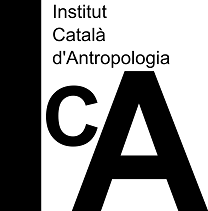Shores and movements: between the urban and the riverside in an Amazonian city. A proposal for an ethnographic and architectural analysis of the mobility on the island of Combu (Belém)
DOI:
https://doi.org/10.56247/qua.408Keywords:
Arquitectura, etnografia, urbanisme subaltern, informalitats, amazonia urbana, mobilitat.Abstract
This article presents an ongoing project that aims to study fluvial mobility practices in the riverside community of Combu Island, in the Brazilian urban Amazonia. The dynamics of mobility in the rivers of Amazonia are a material construction, at the same time being a social product permanently altered by the mobility tactics inherent in everyday life. In general, the existence of the Amazonian territories is neglected by the myths that consider the region as an empty green space.
Given the riverside communities depend on water and use rivers as their main route, the central question in this article is: What can riverside mobility and the social, economic and cultural structures that determine it reveal about urban planning in the cities of Amazonia? The
ongoing research explores how these links translate into forms of life. That is, a relationship that goes beyond the function of connecting places through circulation. By using an interdisciplinary approach between anthropology and architecture, the proposal is to investigate how river routes interact with everyday life, in the case of Combu Island, from the rivers and of the caboclos communities.
Downloads
Global Statistics ℹ️
|
584
Views
|
318
Downloads
|
|
902
Total
|
|
References
Amerlinck, M.-J. (1998). Anthropological Approaches to Landscape. Current Anthropology, 39(5), 738-740. https://doi.org/10.1086/204802 DOI: https://doi.org/10.1086/204802
Amerlinck, M.-J., i Moore, J. D. (2004). Architectural Anthropology. American Anthropologist, 106(1), 173-176. DOI: https://doi.org/10.1525/aa.2004.106.1.173.1
Augé, M. (2007). Por una antropología de la movilidad. Gedisa.
Bhattacharya, T. (2018, febrer 15) Mapping Social Reproduction Theory. Verso. https://www.versobooks.com/blogs/3555-mapping-social-reproduction-theory
Bhattacharya, T., i Vogel, L. (2017). Social reproduction theory: remapping class, recentering oppression. Pluto Press. DOI: https://doi.org/10.2307/j.ctt1vz494j
Eloy, L., Brondizio, E. S., i Do Pateo, R. (2015). New Perspectives on Mobility, Urbanisation and Resource Management in Riverine Amazônia. Bulletin of Latin American research, 34(1), 3-18. https://doi.org/10.1111/blar.12267 DOI: https://doi.org/10.1111/blar.12267
Escobar, A. (2018). Designs for the pluriverse: radical interdependence, autonomy, and the making of worlds. Duke University Press. DOI: https://doi.org/10.1215/9780822371816
Federici, S. (2012). Revolution at point zero housework, reproduction, and feminist struggle. PM Press.
Ferguson, S. (s.d.). Social Reproduction Theory: What’s the Big Idea? Pluto Press. Recuperat 10 abril 2020, de https://www.plutobooks.com/blog/social-reproduction-theory-ferguson/
Gordo, Á., i Serrano, A. (2008). Estrategias y prácticas cualitativas de investigación social. Pearson Prentice Hall.
Hall, S. (1997). Representation: cultural representations and signifying practices. Sage.
Haraway, D. (2015). Anthropocene, Capitalocene, Plantationocene, Chthulucene: Making Kin. Environmental Humanities, 6(1), 159-165. https://doi.org/10.1215/22011919-3615934 DOI: https://doi.org/10.1215/22011919-3615934
IBGE, I. B. de G. e E. (2010). O Brasil Indígena. http://www.funai.gov.br
Ingold, T. (2000). The perception of the environment: essays on livelihood, dwelling and skill. Routledge. https://doi.org/10.4324/9780203466025 DOI: https://doi.org/10.4324/9780203466025
Instituto Peabiru (2014). https://peabiru.org.br/
Krenak, A. (2019). Ideas to Postpone the End of the World. Schwarcz.
Martínez, Z. M., Casanovas, R., Ciocoletto, A., Fonseca, M., i Valdivia, B. G. (2011). Qué aporta la perspectiva de género al urbanismo? Feminismo/s. 17, 106-129. https://doi.org/10.14198/fem.2011.17.06 DOI: https://doi.org/10.14198/fem.2011.17.06
Massey, D. (1984). Spatial divisions of labour: social structures and the geography of
production. Macmillan.
Mbembe, A. (2017). Políticas da inimizade. Antígona.
Melo Júnior, L. C. M., Sayago, D. A. V., i Tourinho, M. M. (2017). Sistemas sociais comunitários ribeirinhos na Amazônia. Sustentabilidade em Debate, 8(3), 138-151. https://doi.org/10.18472/SustDeb.v8n3.2017.24949 DOI: https://doi.org/10.18472/SustDeb.v8n3.2017.24949
Ministério da Integração e do Desenvolvimento Regional. (2021). Sistema Nacional de informação sobre Saneamento básico do Brasil. http://appsnis.mdr.gov.br/indicadores/web/agua_esgoto/mapa-agua
Montoia, G. R. M., i Da Costa, S. M. F. (2019). O ribeirurbano e as cidades da Amazônia: a construção de uma antropogeografia. Novos cadernos NAEA, 22(2).
https://doi.org/10.5801/ncn.v22i2.6547 DOI: https://doi.org/10.5801/ncn.v22i2.6547
Moore, N., i Whelan, Y. (2007). Heritage, memory and the politics of identity new perspectives on the cultural landscape. Ashgate.
Morris, R. C. (2010). Can the subaltern speak?: reflections on the history of an idea. Columbia University Press.
Morton, S. (2007). Gayatri Spivak: ethics, subalternity and the critique of postcolonial reason. Polity. Museu Paraense Emílio Goeldi (2019, diciembre 26). Desmatamento e mudanças climáticas podem dividir a Amazônia em duas. Recuperat 22 juliol 2023, de https://tinyurl.com/yvedbec5
Navas-Perrone, M. G. (2021). Etnografía del proyecto urbano. La producción de la Vila Olímpica. Revista Espacialidades, 1(1), 19-41. https://tinyurl.com/ywhvf94z
Quijano, A., i Ennis, M. (2000). Coloniality of Power, Eurocentrism, and Latin America. Views from South, 1(3), 533-580. DOI: https://doi.org/10.1177/0268580900015002005
Rodrigues, E. T. (2006). Organização comunitária e desenvolvimento territorial: o contexto ribeirinho em uma ilha da Amazônia. Universidade Federal do Pará.
Roy, A. (2010). Poverty capital microfinance and the making of development. Routledge. DOI: https://doi.org/10.4324/9780203854716
Schor, T., Azenha, G. S., i Bartoli, E. (2018). Contemporary urbanization in the Brazilian Amazon: food markets, multisited households and ribeirinho livelihoods. Confins: revue franco-brésilienne de géographie, 37. https://doi.org/10.4000/confins.15682 DOI: https://doi.org/10.4000/confins.15682
Stender, M. (2017). Towards an Architectural Anthropology-What Architects can Learn from Anthropology and vice versa. Architectural theory review, 21(1), 27-43. https://doi.org/10.1080/13264826.2016.1256333 DOI: https://doi.org/10.1080/13264826.2016.1256333
Tapia Gómez, M. (2020). Mujeres y ciudad. Crítica Urbana. Revista de Estudios Urbanos y Territoriales, 3(11). http://criticaurbana.com/critica-urbana-11-mujeres-y-ciudad
Trindade Júnior, S.-C. C. da (2013). An Urbanized Forest? Heritage and Continuities of a Theory about the Meaning of the City and of the Urban in the Amazonian Region. Espaço Aberto, 3(2), 89-108. DOI: https://doi.org/10.36403/espacoaberto.2013.2117
Trindade Júnior, S.-C. C. da T., Leite, G. C. da S., i de Oliveira, H. M. P. de (2021). Amazônia: saberes locais, solidariedade orgânica e flexibilidade equatorial. Ra’e ga, 52, 84-107. https://doi.org/10.5380/raega.v52i0.75488 DOI: https://doi.org/10.5380/raega.v52i0.75488
Tsing, A. L. (2017). The mushroom at the end of the world on the possibility of life in capitalist ruins. Princeton University Press.
Urry, J. (2007). Mobilities. Polity.
Urry, J., i Sheller, M. (2018). Movilizando el nuevo paradigma de las movilidades. Quid 16 (10), 333-355.
WinklerPrins, A. M. G. A. (2009). Cidades da Floresta: Urbanização, Desenvolvimento, e Globalização na Amazônia Brasileira (review). Journal of Latin American geography, 8(1), 198-199. https://doi.org/10.1353/lag.0.0029 DOI: https://doi.org/10.1353/lag.0.0029
Downloads
Published
How to Cite
Issue
Section
License
Distributed under the terms of the Creative Commons Attribution 4.0 International Use and Distribution License (CC BY-NC-SA 4.0)




